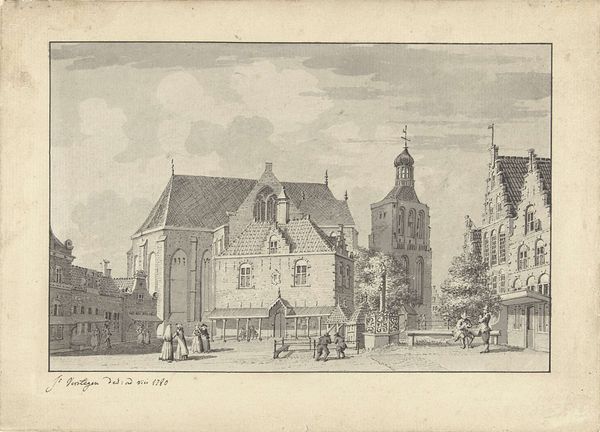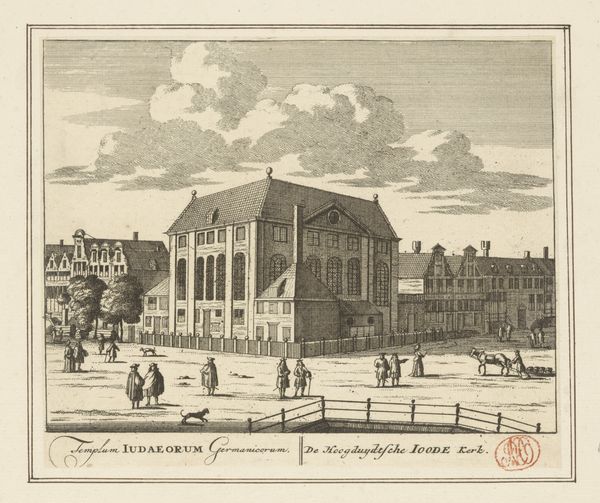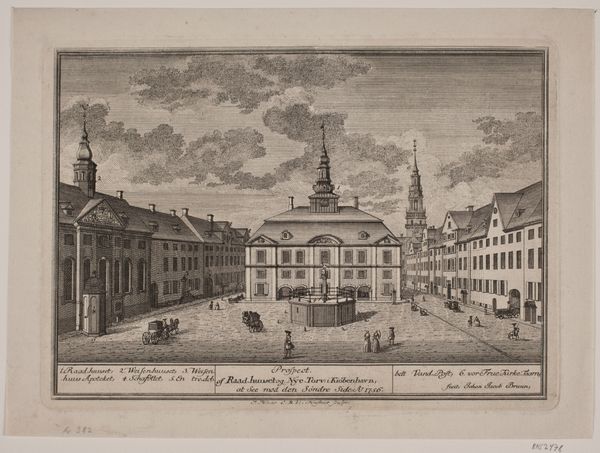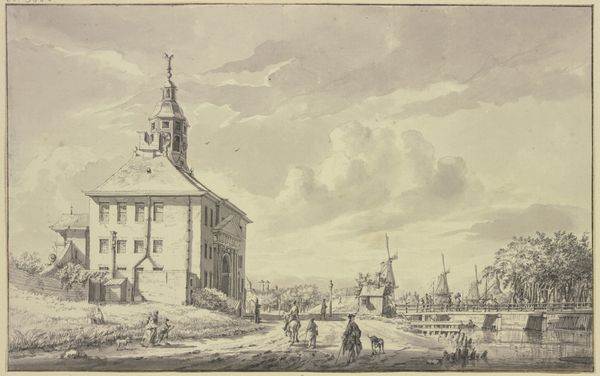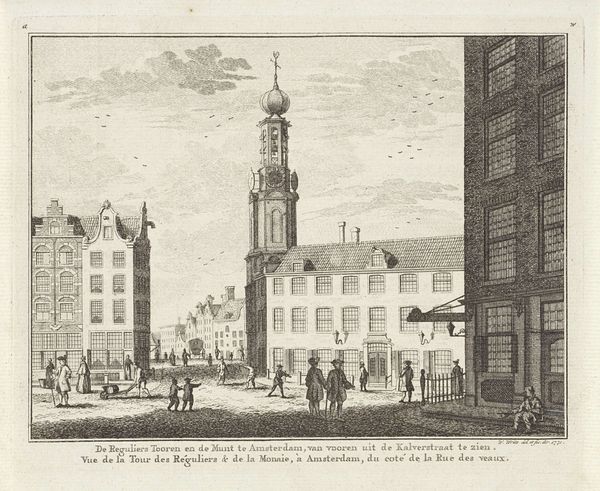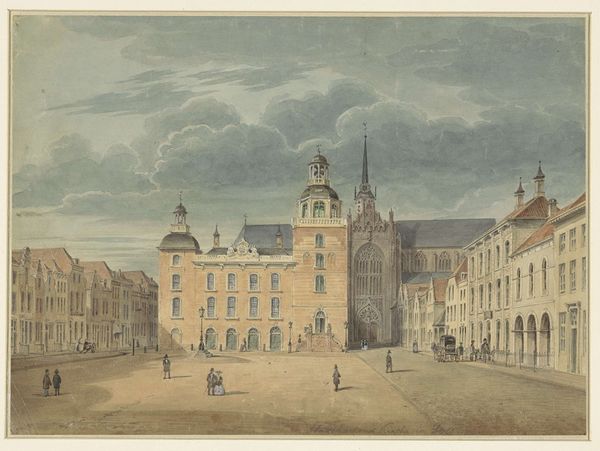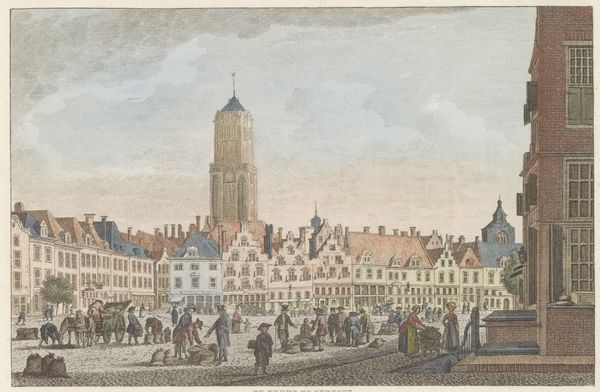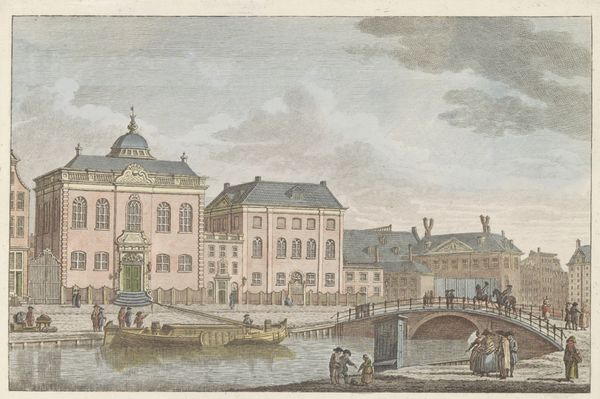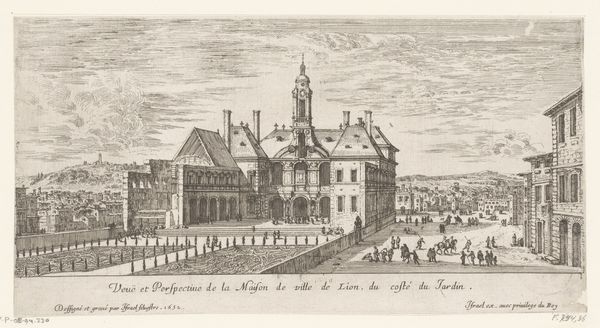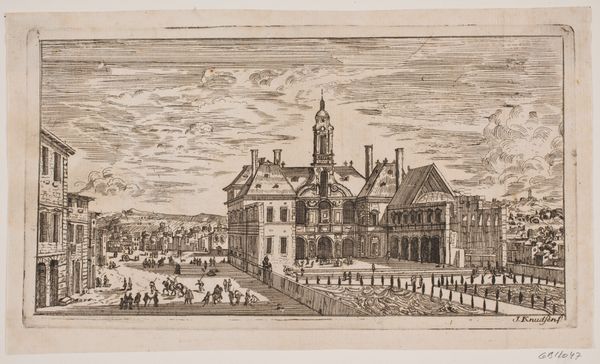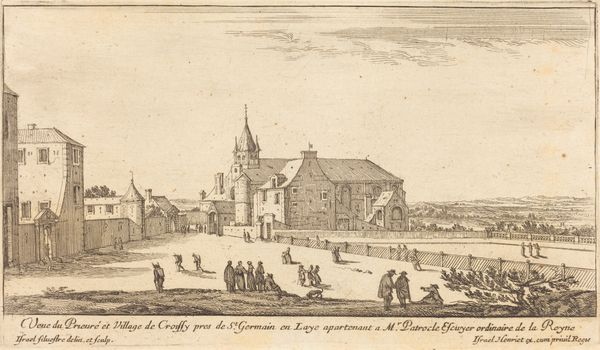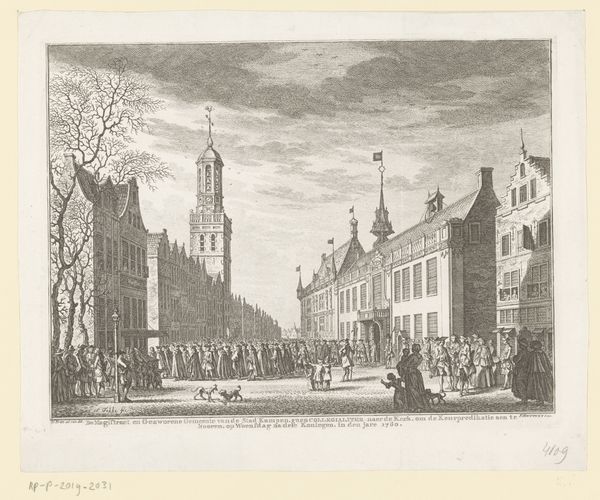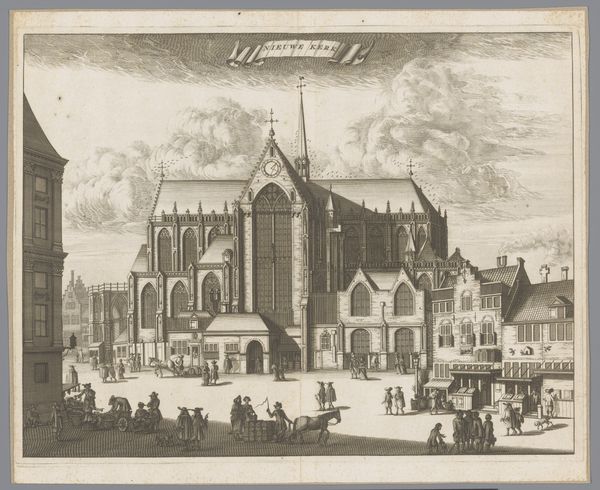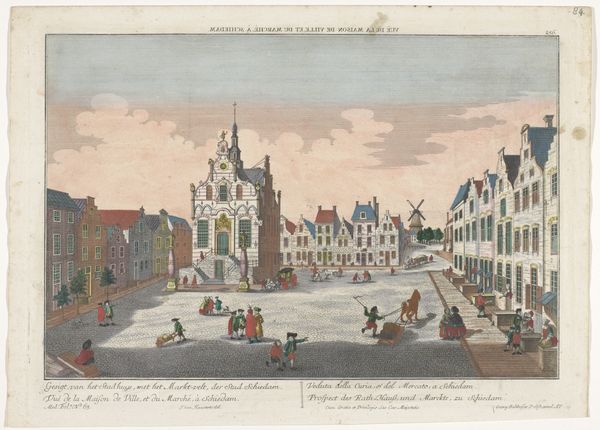
Markt en stadhuis van Schiedam, ca. 1790 Possibly 1786 - 1825
0:00
0:00
plein-air, watercolor
#
neoclacissism
#
plein-air
#
watercolor
#
cityscape
Dimensions: height 173 mm, width 247 mm
Copyright: Rijks Museum: Open Domain
Editor: This is "Markt en stadhuis van Schiedam" – Market and Town Hall of Schiedam – a watercolor cityscape, likely created around 1790 by Carel Frederik Bendorp. It has a certain tranquility; it's lovely in a somewhat unremarkable way, with all these very still people depicted in the market. What's your take? Curator: That tranquility might mask a more complex narrative. Consider the context: this piece emerges during a period of significant political and social upheaval in Europe. The Dutch Republic, though seemingly stable, was facing internal divisions and external pressures. Who benefited from the 'tranquility' captured here? The work romanticizes civic life, subtly reinforcing existing power structures during a period of revolution. Does it normalize a specific view and exclude alternative perspectives? Editor: That’s a really interesting point. I was mainly seeing it as a pleasant, uneventful scene of everyday life. But now I wonder if it's trying to tell a more deliberate story of order and stability. How does the architectural style tie into this? Curator: Neoclassicism, prevalent here, wasn’t merely an aesthetic choice. It signaled a return to the perceived values of the Roman Republic: order, reason, and civic duty. This style, with its emphasis on symmetry and proportion, could legitimize authority and project an image of strength. Editor: So the architecture itself becomes a political statement, in a way? I hadn't considered the buildings in that context, only as…buildings. Curator: Precisely. And consider the 'plein-air' aspect. Bendorp sought to capture the reality of Schiedam, yes, but that reality is framed through his, and likely his patron's, social and political lens. Do you see evidence of what may be intentionally left out? Editor: Now that you mention it, there’s a notable absence of dissenting voices or signs of social unrest, isn't there? This seemingly serene scene now feels much more deliberately constructed, a quiet but potent affirmation of the status quo. Curator: Exactly. By analyzing art within its historical and social context, we see that art becomes a primary document into the political dynamics of its era.
Comments
No comments
Be the first to comment and join the conversation on the ultimate creative platform.
